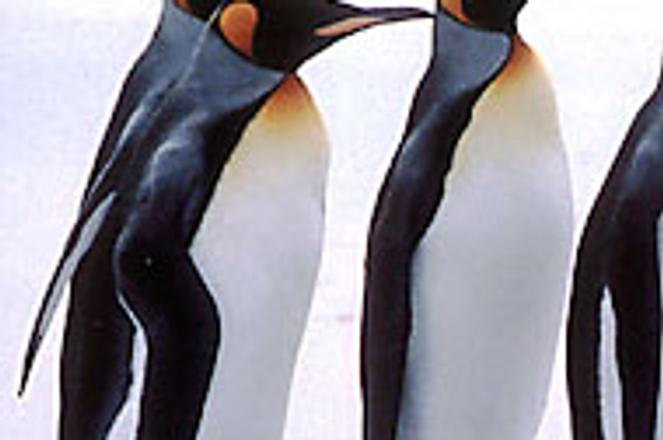PENGUINS wandering across the Arctic mainland.photo: Courtesy of SPI International
Travelling Birds
(La Peuple Migrateur)
Running time: 92 min.
Written and directed by: Jacques Perrin
Rating: 10 out of 10
FOR DIRECTOR Jacques Perrin, known for his films Microcosmos and Himalaya, the filming of Travelling Birds was the fulfilment of a childhood dream, and no mean technical accomplishment besides.
Over the three-and-a-half years they spent in 40 different countries, 14 cameramen followed each 'step' of this stunning film's migrating birds, while 350 technicians took care of the film equipment, some of which had to be specially invented for the movie.
The main stars of the film are the geese, pelicans, condors, storks and albatrosses it tracks; the plot is their perilous trip of several thousand kilometres around the globe.
The point of the film is that these birds have to move home every year in order to survive. They aren't like the hordes of tourists who ape their graceful flights to different hemispheres every year in search of suntans. Birds migrate to find food and raise their offspring, and even though many may die on the arduous journey, they do what they have to do to ensure procreation occurs.
In the film, as you watch their formations fly over Paris or New York, the usual fascination of these massive cities loses its power. Such human landmarks become just one of many settings that are overshadowed by the birds' spectacular airborne feats. At moments, an expression of joy seems to pass across the birds' faces, as if they felt more than a workaday pleasure in their abilities.
The trip itself, though, is not a pleasant journey. Across the continents the birds often fall afoul of people and their disrespect for the environment. Birds caught in cages or unable to fly because their feathers are slicked with oil remind us of our responsibilities as stewards of this planet, and of the fragility of the nature we endanger.
OVER 50 species of birds are the film's main charactersphoto: Courtesy of SPI International
One thing this film teaches is that birds are social animals that like the company of others, that argue and can be selfish, but which need attention from their partners.
There are many surprising moments in the movie, in which the birds seem to wear human expressions, to be puzzled or to mourn the death of their young. Some seem aware of their own beauty. Some seem to play the clown and make ludicrous sounds during mating rituals.
The soundtrack, composed by Bruno Coulais, includes the original voices of the birds and the sounds of nature as caught during filming, a children's choir and a song by Nick Cave. A short commentary gives a brief explanation of migration habits and routes. Although its in French, those who don't understand will not miss much, because the film speaks volumes for itself, and for its beautiful, engaging feathered subjects.


